Related Research Articles
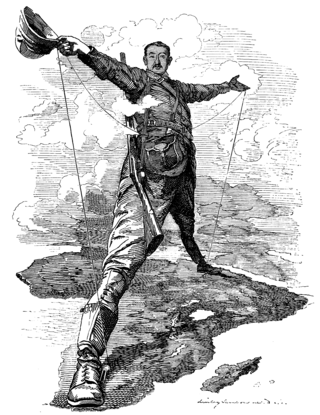
The influence and imperialism of Western Europe and associated states peaked in Asian territories from the colonial period beginning in the 16th century and substantially reducing with 20th century decolonization. It originated in the 15th-century search for alternative trade routes to the Indian subcontinent and Southeast Asia as a response to Ottoman control of the Silk Road that led directly to the Age of Discovery, and additionally the introduction of early modern warfare into what Europeans first called the East Indies and later the Far East. By the early 16th century, the Age of Sail greatly expanded Western European influence and development of the spice trade under colonialism. European-style colonial empires and imperialism operated in Asia throughout six centuries of colonialism, formally ending with the independence of the Portuguese Empire's last colony Macau in 1999. The empires introduced Western concepts of nation and the multinational state. This article attempts to outline the consequent development of the Western concept of the nation state.
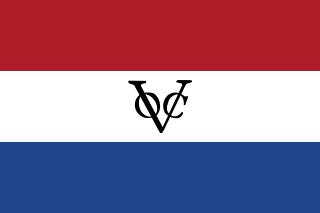
The United East India Company, commonly known as the Dutch East India Company, was a chartered trading company and one of the first joint-stock companies in the world. Established on 20 March 1602 by the States General of the Netherlands amalgamating existing companies, it was granted a 21-year monopoly to carry out trade activities in Asia. Shares in the company could be purchased by any citizen of the United Provinces and subsequently bought and sold in open-air secondary markets. The company possessed quasi-governmental powers, including the ability to wage war, imprison and execute convicts, negotiate treaties, strike its own coins, and establish colonies. Also, because it traded across multiple colonies and countries from both the East and the West, the VOC is sometimes considered to have been the world's first multinational corporation.

Chinese Singaporeans are Singaporeans of Han Chinese ancestry. Chinese Singaporeans constitute 75.9% of the Singaporean resident population according to the official census, making them the largest ethnic group in Singapore.

Santa Catarina was a Portuguese merchant ship, a 1500-ton carrack, that was seized by the Dutch East India Company on 25 February 1603 off Singapore. She was such a rich prize that her sale proceeds increased the capital of the VOC by more than 50%. From the large amounts of Ming Chinese porcelain captured in this ship, Chinese pottery became known in Holland as Kraakporselein, or "carrack-porcelain" for many years.

Singapore in the Straits Settlements refers to a period in the history of Singapore between 1826 and 1942, during which Singapore was part of the Straits Settlements together with Penang and Malacca. Singapore was the capital and the seat of government of the Straits Settlement after it was moved from George Town in 1832.

Seow Poh Leng one of the first few Peranakan Babas at Emerald Hill, was a prominent and successful Singaporean banker, founding member of the Ho Hong Bank, member of the committee of the Straits Settlement, philanthropist and benefactor of public development works. He was a strong advocate of limited liability trading and promoted the advantages of the Limited Liability Company system.
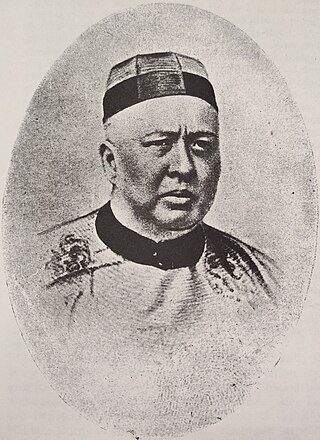
Tan Kim Ching, also known as Tan Kim Cheng, was a Chinese politician and businessman. He was the eldest of the three sons of Tan Tock Seng, the founder and financier of Tan Tock Seng Hospital. He was consul for Japan, Thailand and Russia, and was a member of the Royal Court of Siam. He was one of Singapore's leading Chinese merchants and was one of its richest men in Singapore at that time. He was also the first Asian member of the Straits Branch of the Royal Asiatic Society. After his father's death, he became the Kapitan Cina of the Straits Chinese community. He is believed to have been the head of the Triad in Malaya.

Gan Eng Seng was a Chinese businessman and philanthropist who was one of the early pioneers of Singapore. He is known for his generosity to many charitable causes in Malaya and Singapore during the British colonial era. Some of his most recognised contributions were the setting up of Gan Eng Seng School, the Thong Chai Medical Institution, Tan Tock Seng Hospital, and the Ee Hoe Hean Club.

Mamoru Shinozaki was a journalist for Dentsu and spy for the Ministry of Foreign Affairs in pre-war years, a military executive in Japanese-occupied Singapore, and a businessman and writer in post-war years. He is known for the Shinozaki Case in 1940, and for his testimony in the war crimes trial in 1947 for the Sook Ching massacre.

Lim Peng Siang was a businessperson in Singapore and Malaya. Together with his brother Lim Peng Mau, he founded the Ho Hong Group of companies in 1904, which had interests in banking, shipping, parboiled rice, oil mills, cement, coconut and other businesses. He was a president of the Singapore Chinese Chamber of Commerce and a member of the Chinese Advisory Board. Peng Siang Quay in Singapore is named after him.

Lim Ho Puah was a Hokkien merchant who was born in Amoy in 30 December 1841 and came to Singapore at an early age. He was employed by Wee Bin & Co., where his abilities were noticed by his employer, Wee Bin. He later married Wee Bin's daughter. He was the founder and senior partner of the Wee Bin Steamship Line and other concerns.
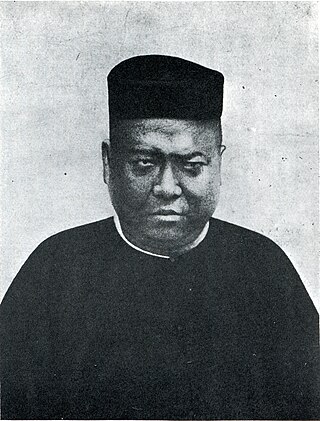
Wee Boon Teck was the only son of Wee Bin and was the latter's successor at the firm of Wee Bin & Co., where he improved and strengthened the position of the firm. He served on the committees of Tan Tock Seng Hospital and Po Leung Kuk. He donated $4,000 to the Tan Tock Seng Hospital, which was invested by Government for about twenty years and which was then applied towards the cost of building a ward bearing his name in the Hospital at Moulmein Road. He was described as having a kindly and charitable disposition. Wee Boon Teck died on 22 September 1888 at the age of 38. Boon Teck Road is named after him.

Wee Bin born in China in about 1823, was a Chinese migrant of the mid-nineteenth century who founded what was, at the time, Singapore's largest Chinese shipping firm.
Kiong Kong Tuan was a Chinese merchant from Penang. He was a merchant in Penang before establishing himself in Singapore. Kiong Kong Tuan held the revenue farms for opium in the 1830s, and also for spirits. He had a spirit factory at Pearl's Hill, and the site was known among the Chinese as Chiu-long-san. He was known to have held the opium and spirit farms in 1848, and was the last opium farmer in Singapore. He was also involved in coffee and real estate. In the 1840s he had 50 acres (200,000 m2) of coffee planted near Jurong. Kiong was the grantee of a large, 20 acres (81,000 m2) tract of land, with Chin Swee Road as the main artery and Cornwall Street and Seok Wee Road as side streets, which was a densely-populated Straits Chinese residential quarter.

Kapitan China Lim Ah Siang, a timber merchant and steam saw miller, the founder of "Chop Sin Moh" Johor Bahru, was the third leader of the Ngee Heng Kongsi of Johor, a legitimised secret society based in Johor Bahru. He was appointed to the position not because he was the most prominent Chinese in Johor at the time but rather, because he was not.

Jardine Matheson Holdings Limited is a Hong Kong-based, Bermuda-domiciled British multinational conglomerate. It has a primary listing on the London Stock Exchange and secondary listings on the Singapore Exchange and Bermuda Stock Exchange. The majority of its business interests are in Asia, and its subsidiaries include Jardine Pacific, Jardine Motors, Hongkong Land, Jardine Strategic Holdings, DFI Retail Group, Mandarin Oriental Hotel Group, Jardine Cycle & Carriage and Astra International. It set up the Jardine Scholarship in 1982 and Mindset, a mental health-focused charity, in 2002.
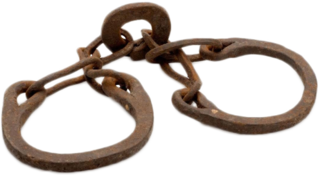
The Indian Ocean slave trade, sometimes known as the East African slave trade, was multi-directional slave trade and has changed over time. Captured in raids primarily south of the Sahara, predominately black Africans were traded as slaves to the Middle East, Indian Ocean islands, Indian subcontinent, and Java. Beginning in the 16th century, they were traded to the Americas, including Caribbean colonies.
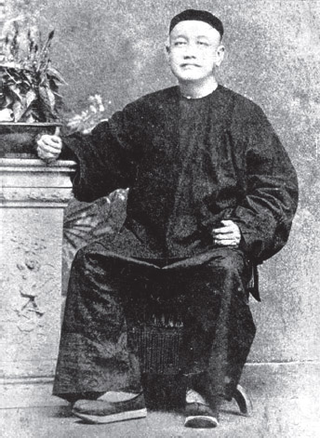
Cheang Hong Lim JP was a Chinese opium merchant and philanthropist in Singapore. He was recognised by the British colonial administration as head of the local Hokkien Chinese community.
The Chinese Commercial Bank was a Malayan bank established in Singapore in 1912. It was also the first Hokkien bank in Singapore. In 1932, the bank was merged with Ho Hong Bank and Oversea-Chinese Bank to form the Oversea-Chinese Banking Corporation.
Goh Siew Tin, alias Goh Tat Pang, was a prominent Chinese merchant. He was the first president of the Singapore Chinese Chamber of Commerce, and was known as the founder of Batu Pahat, Johor.
References
- ↑ The Economic Growth of Singapore: Trade and Development in the Twentieth Century By W. G. Huff Published by Cambridge University Press, 1997; ISBN 0-521-62944-6, ISBN 978-0-521-62944-7; p. 65
- ↑ One Hundred Years' History of the Chinese in Singapore by Ong Siang Song, 1923